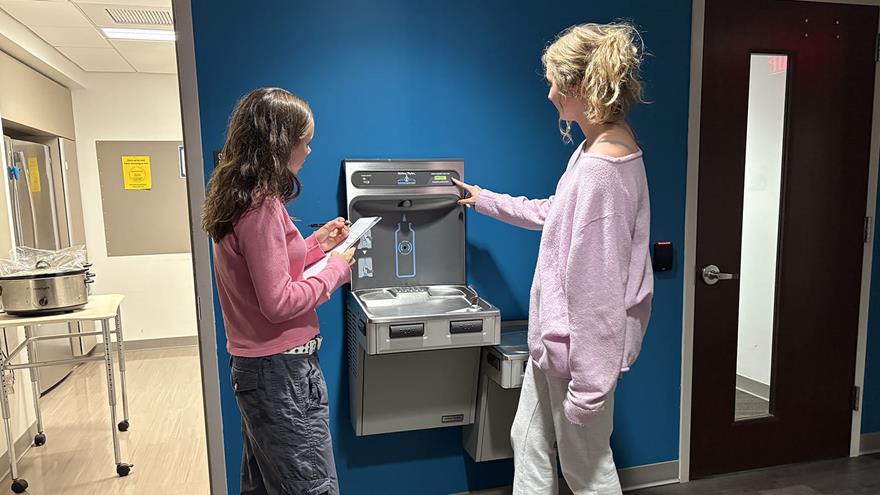Trash or Treasure? How to Repurpose Would-Be Wasted Food to Feed the Hungry and Create Jobs

- Drexel’s Hydration Stations Cut Plastic Waste and Costs
- Drexel Launches the Manuel Stamatakis Center for Alternative Investments at the LeBow College of Business
- Drexel Receives $1.4 Million Grant to Establish Hub for Literacy Reform
- Drexel Public Health Researchers Lead $3.7 Million Study Looking at Impact of Federal Housing Assistance on Health Care for Chronic Conditions

"If I offered you a bruised banana, you probably wouldn’t be interested,” said Jonathan Deutsch, PhD, director of Drexel University’s Center for Hospitality and Sport Management. “But what if I offered you some banana ice cream on a hot summer day? I bet you’d find that a lot more appealing.”
It was this simple observation that inspired a new model for recovering would-be wasted – or surplus – food and repurposing it to feed hungry people, generate revenue and even create jobs. The model was recently piloted in West Philadelphia, home to a large population of low-income and food insecure individuals, as part of the Environmental Protection Agency’s Food Recovery Challenge with support from Brown’s Super Stores.
Compiled by researchers from Drexel University, University of Pennsylvania, Cabrini College and the EPA, the results were published in Food and Nutrition Sciences, a peer-reviewed international journal dedicated to the latest advancements in food and nutrition sciences. The report also projects the amount of food that could be saved if the program was replicated nationally.
Roughly one third of all global food gets wasted, according to the report. In the United States, that number is even higher, with nearly 40 percent of all food going to waste, making it one of the most wasteful countries in the world.
Supermarkets – where fresh produce is routinely taken off the shelves for cosmetic reasons – are a major source of this food waste. It was here that the researchers chose to focus on saving food loss and channeling this food stream in new and efficient ways to those in hunger.

Drexel culinary arts and food science students collected thousands of pounds of bruised or misshapen fruits and vegetables from area supermarkets and developed products and recipes in the student-run Drexel Food Lab to put them to better use. These new, more appealing products could then be served or sold, diverting the food items from the landfill and creating a more sustainable food system, dubbed the Food System-Sensitive Methodology (FSSM) by the researchers.
To illustrate the model, Deutsch returned to the banana example.
“As soon as bananas are ripe, they are pulled from supermarket shelves because they’ll be overripe by the time the consumer gets them home and may get thrown in the trash,” he said.
Although many supermarkets now donate such surplus foods to soup kitchens or shelters, items like overripe or bruised bananas may still end up in the trash because they are unappealing, even to someone who is food insecure.
“We took a look at what was happening and realized that it was just shifting the problem and not actually solving it,” said Deutsch.
Next, the Drexel Food Lab looked at the food items that were commonly going to waste – bananas, tomatoes, greens, sweet potatoes – and developed low-cost, limited-skill ways to repurpose these surplus food items.
“So, for example, we took those brown bananas, peeled them, froze them and food processed them to create banana ice cream, which is much more appealing. If we then wholesaled those products back to the grocery store, they could be sold at nearly double the price.”
In an evaluation of just one month of the program, the researchers found that 35,000 pounds of surplus produce were gathered from 11 area supermarkets. If the surplus produce was purchased for a reduced price of $0.25 per pound and was processed into value-added food products such as veggie chips, jams and smoothie bases, it could then be wholesaled back to the same supermarket or other community-based retailers for $2.00 per pound.
These products could then be retailed at double the price, the researchers estimate, generating more than $90,000 in monthly gross revenue, enough to support several employees at a family wage.
Applying FSSM, the preliminary results suggest that the potential production inputs nationally would be about 1.1 billion pounds annually. According to the researchers, the scalable economic, social and environmental opportunities are substantial.
“An important way to address global food security is to make better use of the food already produced,” the researchers wrote. “[The FSSM model] could help relieve chronic hunger and address the cost barriers that prevent these important sources of healthy dietary nutrients from reaching lower income people in the U.S. …The possibility for other foods, such as meats, grains and dairy, to increase diversion of food waste to hunger relief only brightens this outlook.”
In This Article
Contact
Drexel News is produced by
University Marketing and Communications.